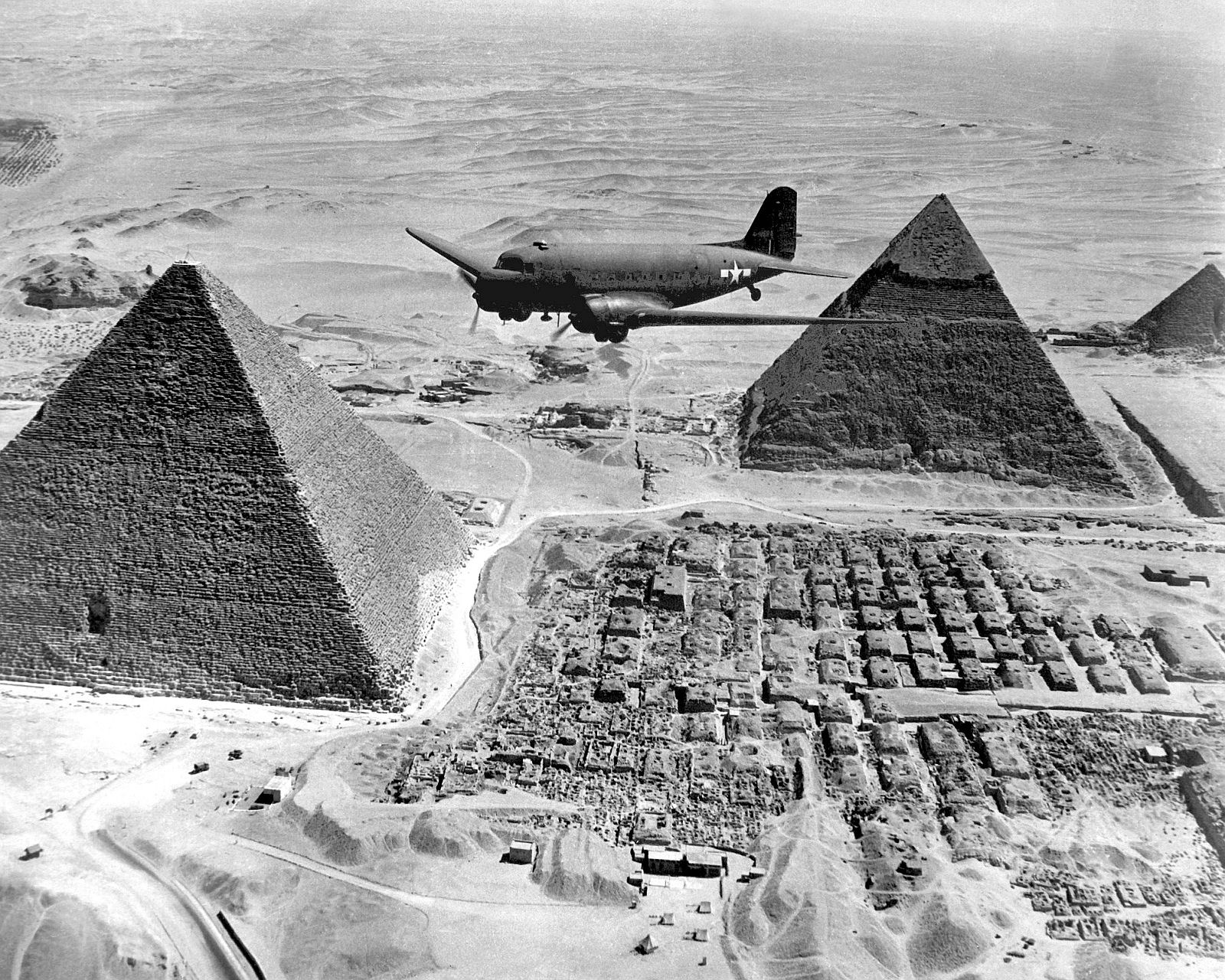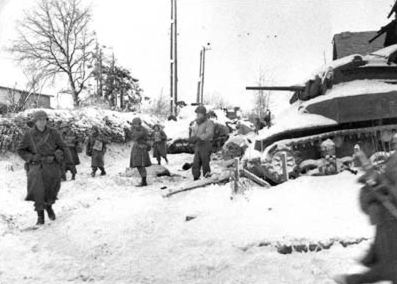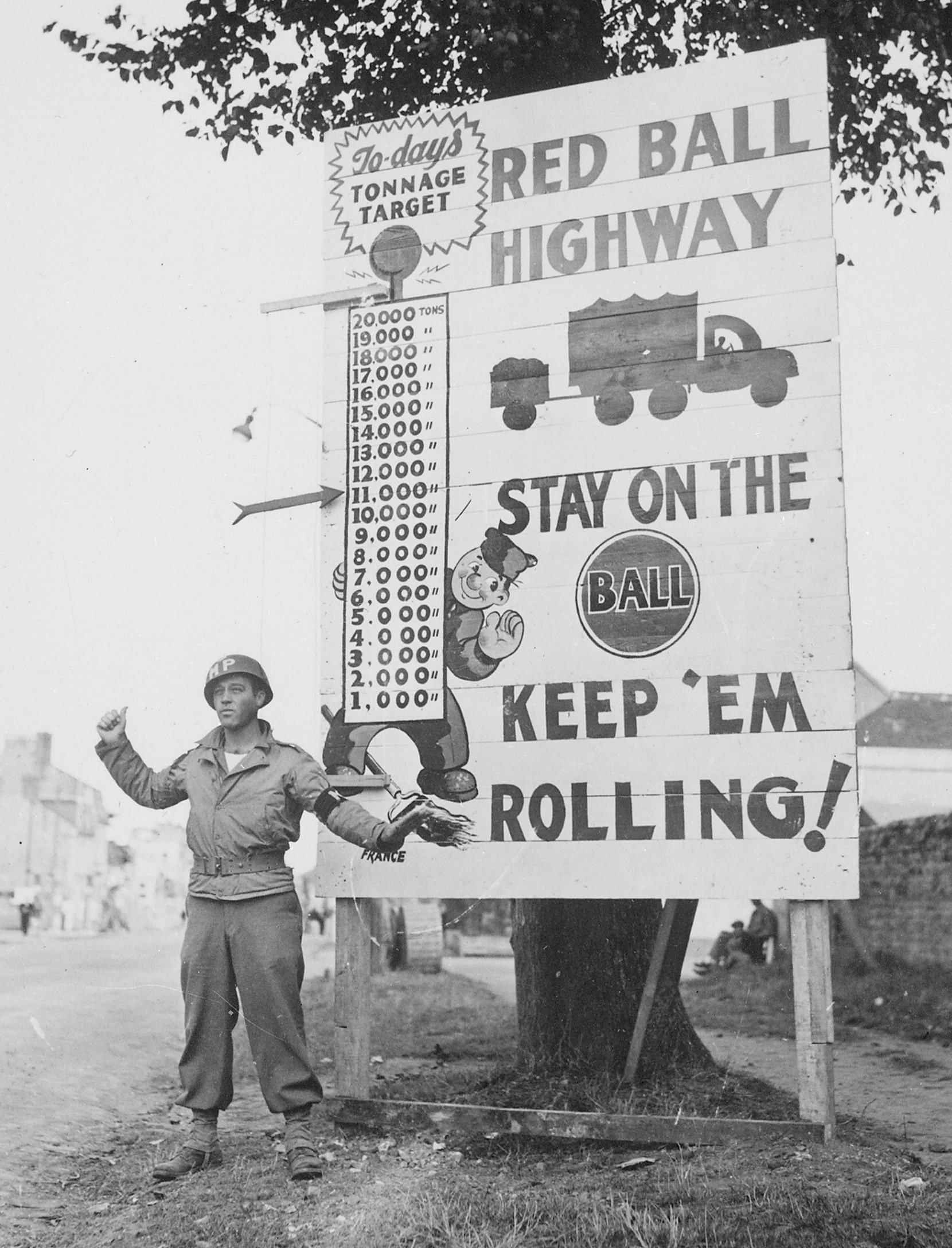|
43d Troop Carrier Squadron
The 43d Troop Carrier Squadron is an inactive United States Air Force unit. Its last assignment was with the 315th Troop Carrier Group, based at Brady Air Base, Japan. It was inactivated on 18 January 1955. History World War II Established in early 1942 as a Douglas C-47 Skytrain transport squadron under First Air Force, later trained under I Troop Carrier Command in the eastern United States. Deployed to England in December 1942, being assigned to VIII Air Support Command, Eighth Air Force to provide transport and resupply support to the buildup of the heavy bomber force in England. Was detached to Twelfth Air Force in Algeria in May 1943 to provide air resupply and transport during the North African Campaign in Algeria and Tunisia. Also performed combat casualty evacuation of wounded personnel to rear areas. Remained under jurisdiction of VIII Air Service Command while in North Africa, providing transport between England and North Africa from its base in Algeria. R ... [...More Info...] [...Related Items...] OR: [Wikipedia] [Google] [Baidu] |
Military Operation
A military operation is the coordinated military actions of a state, or a non-state actor, in response to a developing situation. These actions are designed as a military plan to resolve the situation in the state or actor's favor. Operations may be of a combat or non-combat nature and may be referred to by a code name for the purpose of national security. Military operations are often known for their more generally accepted common usage names than their actual operational objectives. Types of military operations Military operations can be classified by the scale and scope of force employment, and their impact on the wider conflict. The scope of military operations can be: * Theater: this describes an operation over a large, often continental, area of operation and represents a strategic national commitment to the conflict, such as Operation Barbarossa, with general goals that encompass areas of consideration outside the military, such as the economic and political impa ... [...More Info...] [...Related Items...] OR: [Wikipedia] [Google] [Baidu] |
Air Transport Command
Air Transport Command (ATC) was a United States Air Force unit that was created during World War II as the strategic airlift component of the United States Army Air Forces. It had two main missions, the first being the delivery of supplies and equipment between the United States and the overseas combat theaters; the second was the ferrying of aircraft from the manufacturing plants in the United States to where they were needed for training or for operational use in combat. ATC also operated a worldwide air transportation system for military personnel. Inactivated on 1 June 1948, Air Transport Command was the precursor to what became the Military Air Transport Service in 1948 and was redesignated Military Airlift Command (MAC) in 1966. It was consolidated with MAC in 1982, providing a continuous history of long range airlift through 1992 when the mission was transferred to today's Air Mobility Command. History By no means least among the achievements of the Army Air Forces ... [...More Info...] [...Related Items...] OR: [Wikipedia] [Google] [Baidu] |
Waller Field
Waller Air Force Base is a former United States Air Force World War II air base located in northeastern Trinidad. It is located about 5 miles (8 km) southwest of Valencia south of the Churchill-Roosevelt Highway and roughly 32 km from the capital city Port of Spain. History The American rights to the airfield were obtained via the Destroyers for Bases Agreement in September 1940, when the United States transferred fifty destroyers to Great Britain in exchange for Army and Navy base rights on British possessions in the Americas. In 1941, Trinidad was alarmed by a large number of Nazi U-boats prowling off its coastline, intent on disrupting British shipping in the Caribbean Sea, and using the Vichy French controlled island of Martinique as a possible supply facility. Although the first United States Army personnel arrived on Trinidad on 24 April 1941, it was only after the United States' entry into the war, that Allied planners, in early 1942, decided to counter the Nazi ... [...More Info...] [...Related Items...] OR: [Wikipedia] [Google] [Baidu] |
V-E Day
Victory in Europe Day is the day celebrating the formal acceptance by the Allies of World War II of Germany's unconditional surrender of its armed forces on Tuesday, 8 May 1945, marking the official end of World War II in Europe in the Eastern Front, with the last shots fired on the 11th. Russia and some former Soviet countries celebrate on 9 May. Several countries observe public holidays on the day each year, also called Victory Over Fascism Day, Liberation Day or Victory Day. In the UK it is often abbreviated to VE Day, or V-E Day in the US, a term which existed as early as September 1944, in anticipation of victory. The end of all combat actions was specified as 23:01 Central European Time, which was already 9 May in eastern Europe, and thus several former Soviet bloc countries including Russia and Belarus, as well as some former Yugoslav countries like Serbia, celebrate Victory Day on 9 May. History Adolf Hitler, the Nazi leader, had committed suicide on 30 April ... [...More Info...] [...Related Items...] OR: [Wikipedia] [Google] [Baidu] |
Wesel
Wesel () is a city in North Rhine-Westphalia, Germany. It is the capital of the Wesel district. Geography Wesel is situated at the confluence of the Lippe River and the Rhine. Division of the city Suburbs of Wesel include Lackhausen, Obrighoven, Ginderich, Feldmark, Fusternberg, Büderich, Flüren and Blumenkamp. History Origin The city originated from a Franconian manor that was first recorded in the 8th century. In the 12th century, the Duke of Clèves took possession of Wesel. The city became a member of the Hanseatic League during the 15th century. Wesel was second only to Cologne in the lower Rhine region as an entrepôt. It was an important commercial centre: a clearing station for the transshipment and trading of goods. Early modern In 1590 the Spanish captured Wesel after a four-year siege. The city changed hands between the Dutch and Spanish several times during the Eighty Years War. In 1672 a French force under Louis II de Bourbon, Prince de Condé capture ... [...More Info...] [...Related Items...] OR: [Wikipedia] [Google] [Baidu] |
17th Airborne Division (United States)
The 17th Airborne Division, "The Golden Talons", was an airborne infantry division of the United States Army during World War II, commanded by Major General William M. Miley. It was officially activated as an airborne division in April 1943 but was not immediately sent to a combat theater, remaining in the United States to complete its training. During this training process, the division took part in several training exercises, including the Knollwood Maneuver, in which it played a vital part in ensuring that the airborne division remained as a military formation in the U.S. Army. As such it did not take part in the first two large-scale airborne operations conducted by the Allies, Operation Husky and Operation Neptune, transferring to Britain only after the end of Operation Overlord. When the division arrived in Britain, it came under the command of Maj. Gen. Matthew B. Ridgway's XVIII Airborne Corps, a part of Maj. Gen. Lewis H. Brereton's First Allied Airborne Ar ... [...More Info...] [...Related Items...] OR: [Wikipedia] [Google] [Baidu] |
Rhine River
), Surselva, Graubünden, Switzerland , source1_coordinates= , source1_elevation = , source2 = Rein Posteriur/Hinterrhein , source2_location = Paradies Glacier, Graubünden, Switzerland , source2_coordinates= , source2_elevation = , source_confluence = Reichenau , source_confluence_location = Tamins, Graubünden, Switzerland , source_confluence_coordinates= , source_confluence_elevation = , mouth = North Sea , mouth_location = Netherlands , mouth_coordinates = , mouth_elevation = , progression = , river_system = , basin_size = , tributaries_left = , tributaries_right = , custom_label = , custom_data = , extra = The Rhine ; french: Rhin ; nl, Rijn ; wa, Rén ; li, Rien; rm, label= Sursilvan, Rein, rm, label= Sutsilvan and Surmiran, Ragn, rm, label= Rumantsch Grischun, Vallader and Puter, Rain; it, Reno ; gsw, Rhi(n), inc ... [...More Info...] [...Related Items...] OR: [Wikipedia] [Google] [Baidu] |
Bastogne
Bastogne (; nl, Bastenaken, ; german: Bastnach/Bastenach; lb, Baaschtnech) is a city and municipality of Wallonia located in the province of Luxembourg in the Ardennes, Belgium. The municipality consists of the following districts: Bastogne, Longvilly, Noville, Villers-la-Bonne-Eau, and Wardin. The town is situated on a ridge in the Ardennes at an elevation of . History At the time of the Roman conquest the region of Bastogne was inhabited by the Treveri, a tribe of Gauls. A form of the name Bastogne was first mentioned only much later, in 634, when the local lord ceded these territories to the St Maximin's Abbey, near Trier. A century later, the Bastogne area went to the nearby Prüm Abbey. The town of Bastogne and its marketplace are again mentioned in an 887 document. By the 13th century, Henry VII, Holy Roman Emperor and count of Luxemburg, was minting coins in Bastogne. In 1332, John the Blind, his son, granted the city its charter and had it encircled by def ... [...More Info...] [...Related Items...] OR: [Wikipedia] [Google] [Baidu] |
Battle Of The Bulge
The Battle of the Bulge, also known as the Ardennes Offensive, was the last major German offensive campaign on the Western Front during World War II. The battle lasted from 16 December 1944 to 28 January 1945, towards the end of the war in Europe. It was launched through the densely forested Ardennes region between Belgium and Luxembourg. The primary military objectives were to deny further use of the Belgian port of Antwerp to the Allies and to split the Allied lines, which potentially could have allowed the Germans to encircle and destroy the four Allied forces. Nazi dictator Adolf Hitler, who since December 1941 had assumed direct command of the German army, believed that achieving these objectives would compel the Western Allies to accept a peace treaty in the Axis powers' favor. By this time, it was palpable to virtually the entire German leadership including Hitler himself that they had no realistic hope of repelling the imminent Soviet invasion of Germany unless the ... [...More Info...] [...Related Items...] OR: [Wikipedia] [Google] [Baidu] |
Operation Market Garden
Operation Market Garden was an Allied military operation during the Second World War fought in the Netherlands from 17 to 27 September 1944. Its objective was to create a salient into German territory with a bridgehead over the River Rhine, creating an Allied invasion route into northern Germany. This was to be achieved by two sub-operations: seizing nine bridges with combined U.S. and British airborne forces (Market) followed by land forces swiftly following over the bridges (Garden). The airborne operation was planned and undertaken by the First Allied Airborne Army with the land operation by XXX Corps of the British Second Army.The Battle for the Rhine 1944 by Robin Neillands, Chapter 4 The Road to Arnhem Although the largest airborne operation of the war up to that point, Market Garden's ultimate outcome remains debated: The operation succeeded in liberating the Dutch cities of Eindhoven and Nijmegen along with many towns, and limited V-2 rocket launching sites. How ... [...More Info...] [...Related Items...] OR: [Wikipedia] [Google] [Baidu] |
Nijmegen
Nijmegen (;; Spanish and it, Nimega. Nijmeegs: ''Nimwèège'' ) is the largest city in the Dutch province of Gelderland and tenth largest of the Netherlands as a whole, located on the Waal river close to the German border. It is about 60 km south east of Utrecht and 50 km north east of Eindhoven. Nijmegen is the oldest city in the Netherlands, the second to be recognized as such in Roman times, and in 2005 celebrated 2,000 years of existence. Nijmegen became a free imperial city in 1230 and in 1402 a Hanseatic city. Since 1923 it has been a university city with the opening of a Catholic institution now known as the Radboud University Nijmegen. The city is well known for the International Four Days Marches Nijmegen event. Its population in 2022 was 179,000; the municipality is part of the Arnhem–Nijmegen metropolitan area, with 736,107 inhabitants in 2011. Population centres The municipality is formed by the city of Nijmegen, incorporating the former villages ... [...More Info...] [...Related Items...] OR: [Wikipedia] [Google] [Baidu] |










